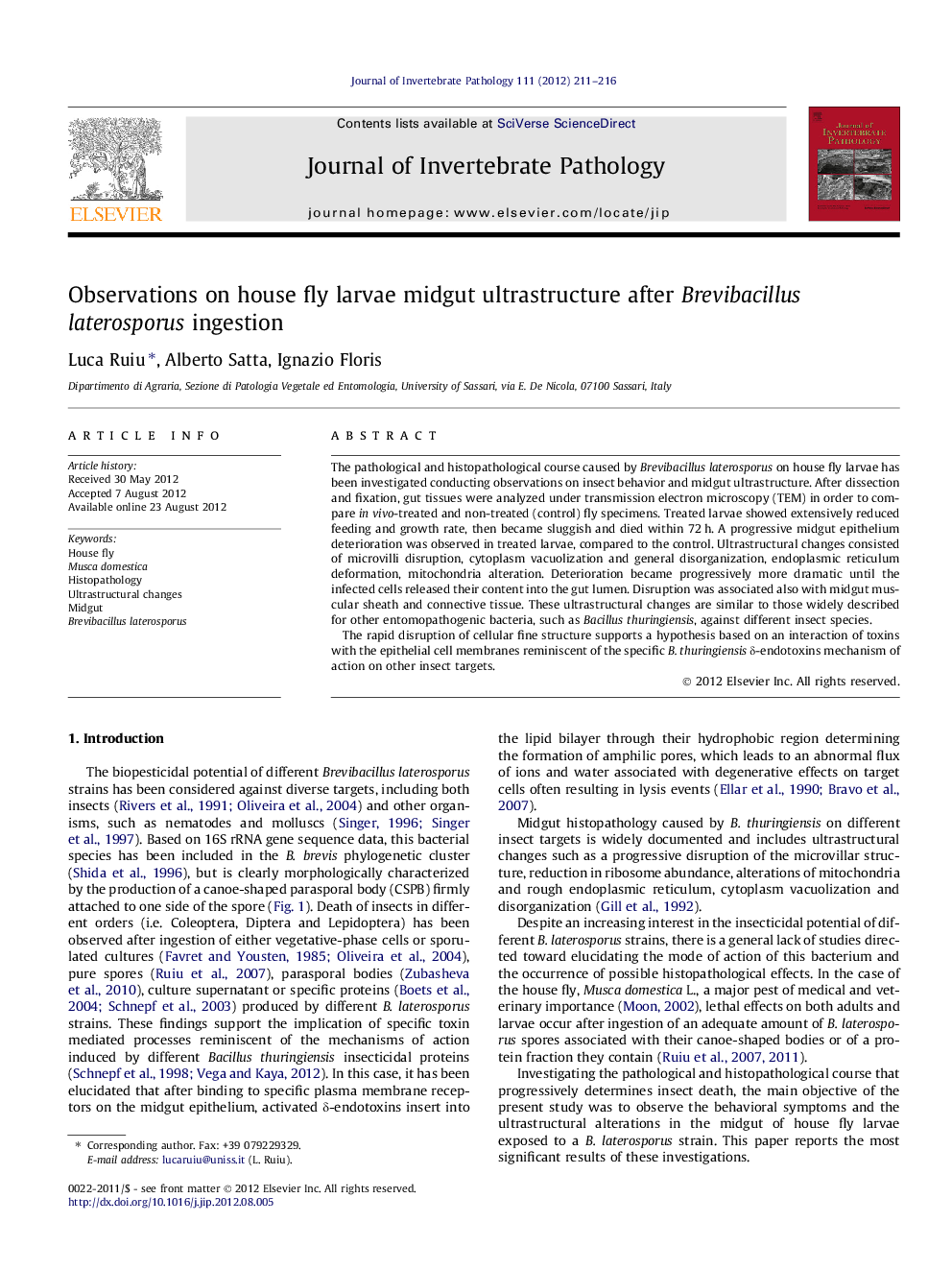| Article ID | Journal | Published Year | Pages | File Type |
|---|---|---|---|---|
| 4557861 | Journal of Invertebrate Pathology | 2012 | 6 Pages |
The pathological and histopathological course caused by Brevibacillus laterosporus on house fly larvae has been investigated conducting observations on insect behavior and midgut ultrastructure. After dissection and fixation, gut tissues were analyzed under transmission electron microscopy (TEM) in order to compare in vivo-treated and non-treated (control) fly specimens. Treated larvae showed extensively reduced feeding and growth rate, then became sluggish and died within 72 h. A progressive midgut epithelium deterioration was observed in treated larvae, compared to the control. Ultrastructural changes consisted of microvilli disruption, cytoplasm vacuolization and general disorganization, endoplasmic reticulum deformation, mitochondria alteration. Deterioration became progressively more dramatic until the infected cells released their content into the gut lumen. Disruption was associated also with midgut muscular sheath and connective tissue. These ultrastructural changes are similar to those widely described for other entomopathogenic bacteria, such as Bacillus thuringiensis, against different insect species.The rapid disruption of cellular fine structure supports a hypothesis based on an interaction of toxins with the epithelial cell membranes reminiscent of the specific B. thuringiensis δ-endotoxins mechanism of action on other insect targets.
Graphical abstractFigure optionsDownload full-size imageDownload as PowerPoint slideHighlights► Brevibacillus laterosporus effects were studied on house fly larvae midgut. ► Treated larvae were sluggish and displayed alterations of the midgut epithelium. ► Deteriorations became progressively more dramatic until cell lysis and insect death. ► Results were reminiscent of those known for Bacillus thuringiensis.
